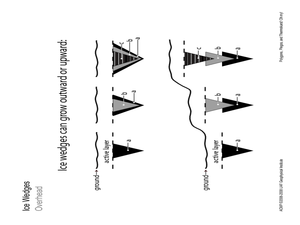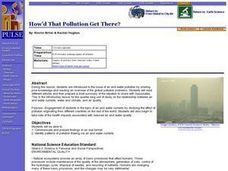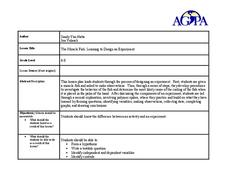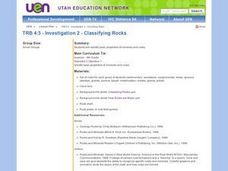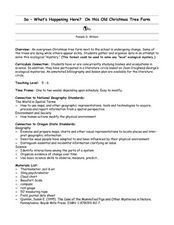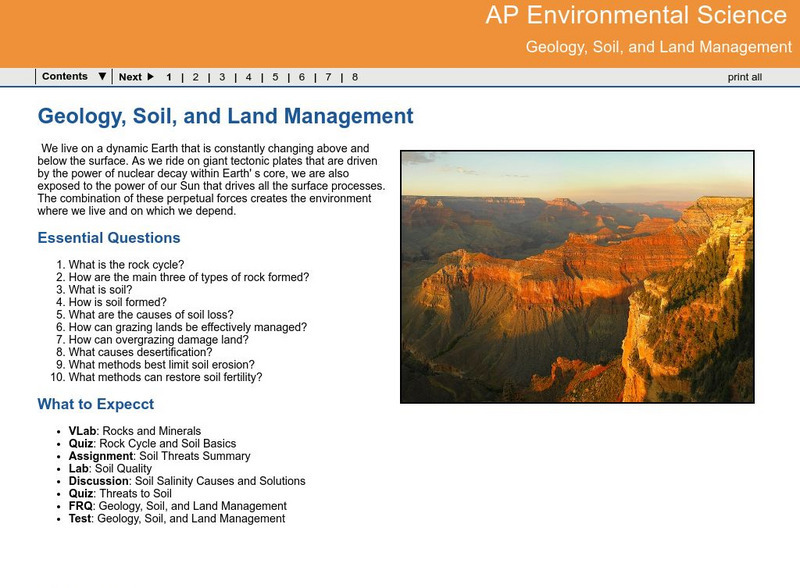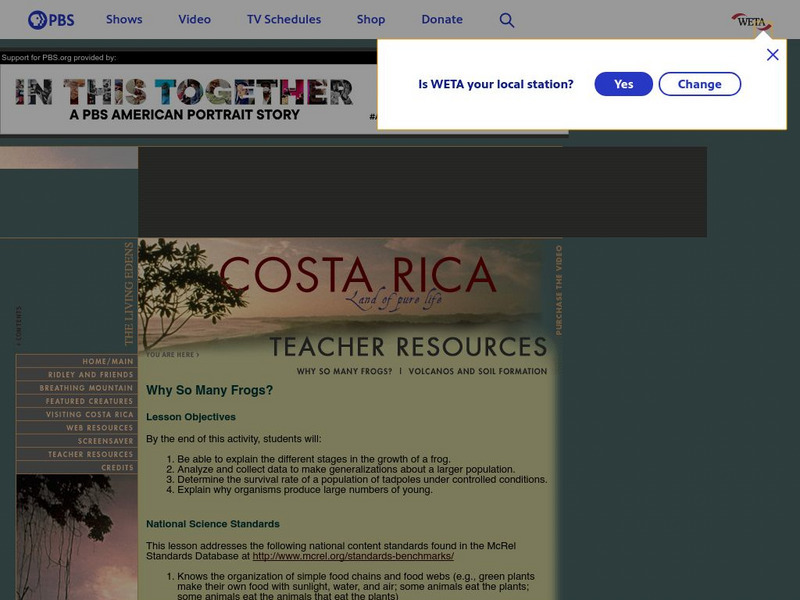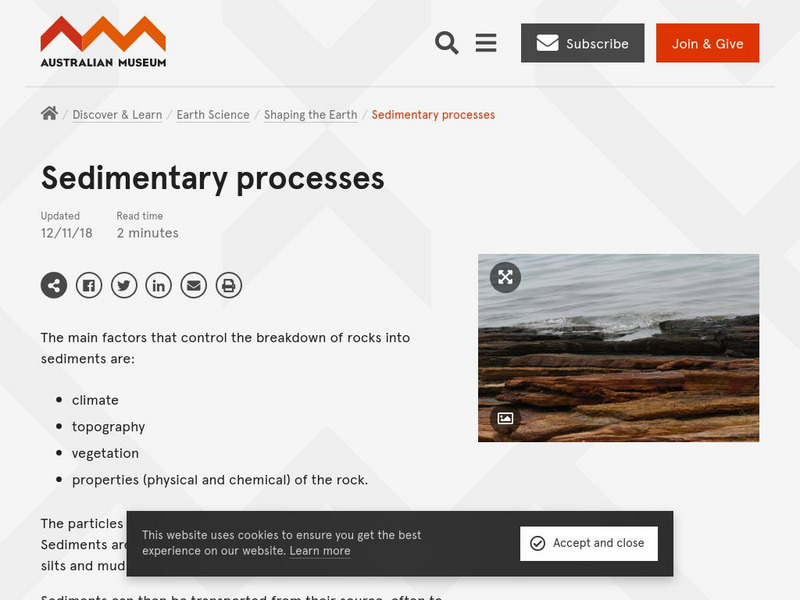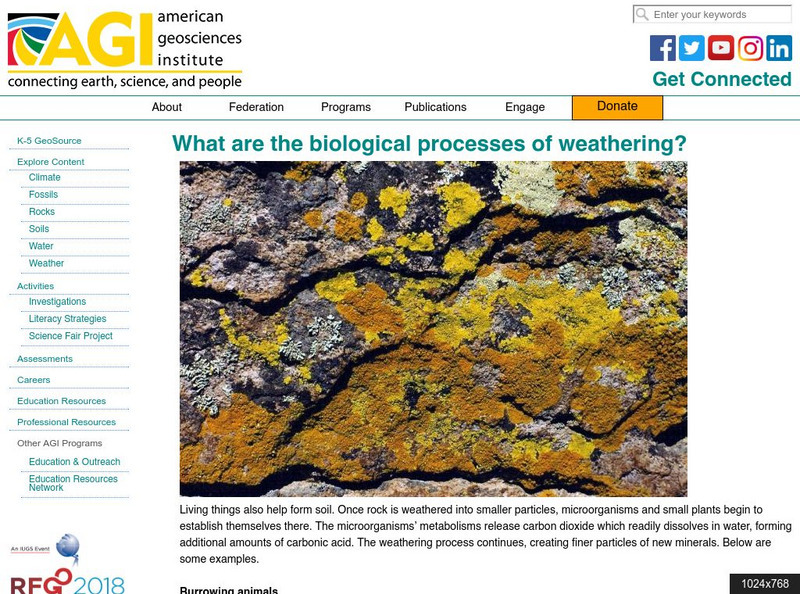Curated OER
Polygons, Pingos, and Themokarst! Oh MY!
Students complete activities to learn about the common land features in Alaska. In this land study lesson, students study an overhead for permafrost features. Students define ice wedge polygons, thermokarst, and pingos. Students also...
Curated OER
Environment: How'd That Pollution Get There?
Students examine how global wind and water patterns aid in the spread of worldwide pollution. In groups, they read articles about the domino effect of pollution and create posters displaying its journey. On blank world maps, students...
Curated OER
The Miracle Fish: Learning to Design an Experiment
Young scholars develop procedures to explore the behavior of fish. In this scientific experiment lesson students from a hypothesis, write a question, identify different variables and controls in their experiment.
Curated OER
Investigation 2 - Classifying Rocks
Fourth graders identify basic properties of minerals and rocks. They access websites and utilize worksheets imbedded in this lesson to further their understanding of rock classification.
Curated OER
Volcanoes:How Safe Are They?
Young scholars explore volcanoes, locate them on maps, record general information about volcanoes, and organize information on a fact sheet.
Curated OER
Map Reading
After examining a map from 1803 and 2003, they explore how to become map readers. They describe what they see on the map from 1803 and compare the information to the map from 2003. Students create their own map of the neighborhood that...
Curated OER
Amoeba This!!! Amoeba That!!!
Young scholars investigate protozoa. In this protozoa lesson, students identify and classify different types of protozoa using different ecological samples and protozoa charts.
Curated OER
Google Earth Scavenger Hunt
Learners complete activities to learn how to use Google Earth and study Alaska. For this Google Earth lesson, students complete a Google Earth scavenger hunt to find facts about Alaska. Learners complete two worksheets for the topic.
Curated OER
Regions: Meet the Experts Presentation
Students gather information and create a web site on prairies and plains using a variety of resources, including the internet.
Curated OER
So -- What's Happening Here? On this Old Christmas Tree Farm
Students take a field trip to an old Christmas tree farm near their school. In groups, they gather data at the site and analyze the data in an attempt to discover what happened to the area. They identify human activities that led to the...
Utah Education Network
Uen: The Dirt on Soil
After completing this lesson, young scholars will understand the source and the process for the formation of soil, the different types of soil, and the components of soil.
Other
N.e. Soil Formation: Genesis
This comprehensive site explores a number of soil related topics. A glossary of soil terms, formation of soils, and classification of soils are just of a few of the topics found on this this.
Georgia Department of Education
Ga Virtual Learning: Ap Environmental Science: Geology, Soil and Land Management
Students explore how Earth processes shape the land, and how important managing the land can be in response to these natural activities.
Other
Nasa: The Case of the Prize Winning Plants [Pdf]
This program uses a scenario with fictional detective characters to present plant growth to students. While the unit focuses on the basic needs and parts of plants, the topics of plant classification and adaptations, soil formation and...
PBS
Pbs Teachers:costa Rica: Volcanos and Soil Formation
Examine why newly-formed lava has little plant life, explain why one generation of plant life allows subsequent plant life to grow in an area and determine why organic soil formation is a slow process.
Other
Okanagan University: Eolian Processes and Landforms
A wonderfully detailed introduction to the topic of wind erosion and landforms. Contains many illustrations and maps which show the concepts that are presented in the text.
Australian Museum
Australian Museum: Sedimentary Processes
Everything you need to know about sedimentary rocks and the processes by which they are created, including weathering, soils, environments, and classification.
American Geosciences Institute
American Geosciences Institute: What Are the Biological Processes of Weathering?
Learn about biological factors in the weathering and breakdown of rocks.
Biology Pages
Kimball's Biology Pages: Soil Horizons
This site is a personal site from John W. Kimball, a Harvard Professor, that contains a brief definition of both topsoil and subsoil. A drawing supplements the text.
